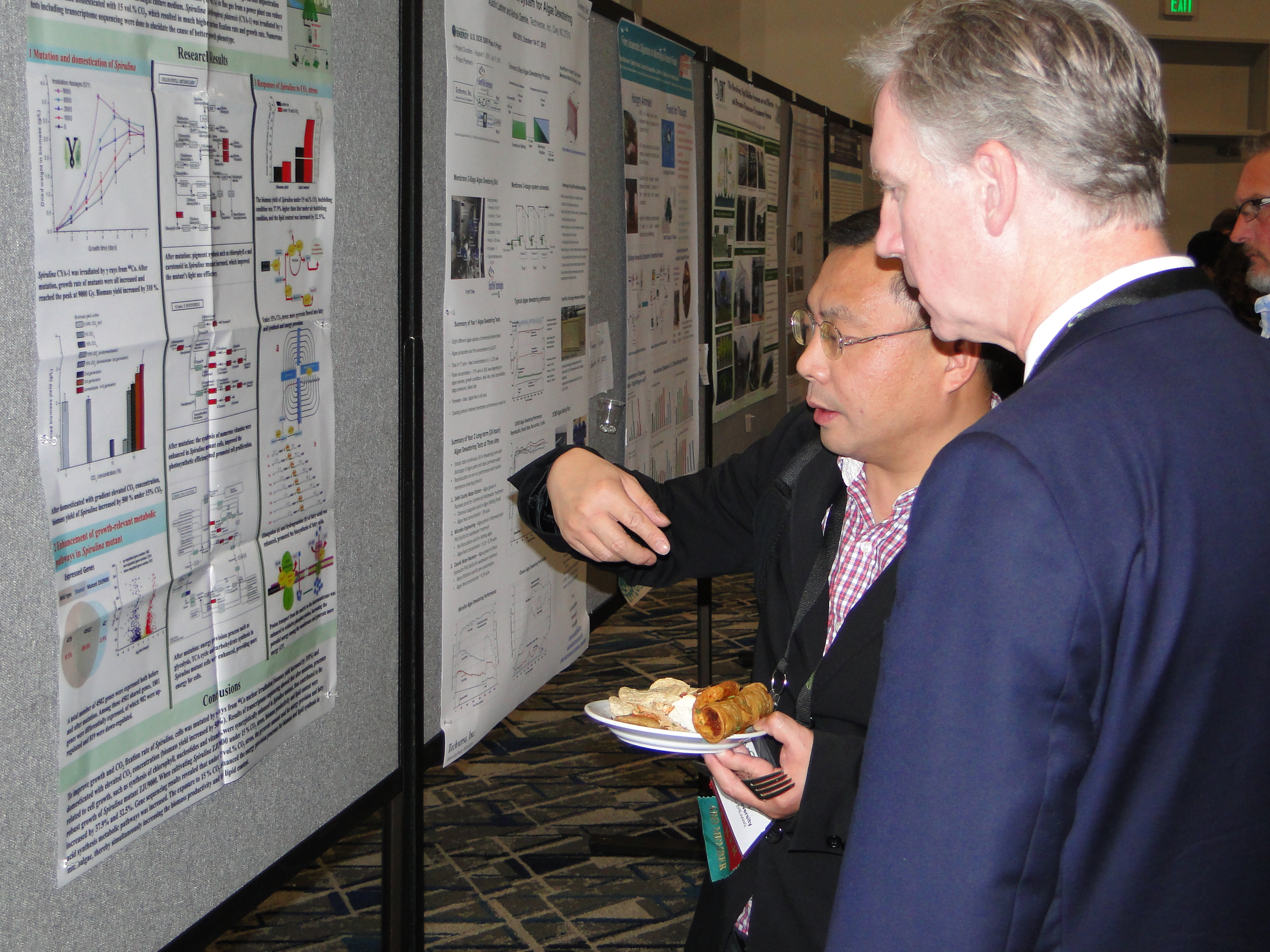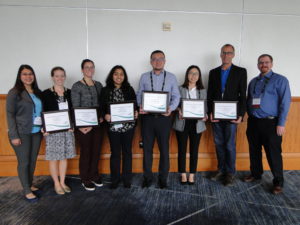This month hundreds of entrepreneurs, scientists, investors and government leaders gathered in Houston for the 2018 Algae Biomass Summit. The themes that emerged from the tours, speaker presentations, poster sessions and product demonstrations all pointed to an industry that is evolving, growing, and succeeding in more places than ever.
Check out Twitter hashtag #algae2018 to review some of the action, and be sure to take advantage of ABO’s fall recruitment discounts. Recruit a new member and get 20% off both memberships until November 15th!
Summit Highlights: A Billion Years in the Making

ABO’s executive director Matt Carr noted in his opening keynote that hundreds of millions of years ago algae enabled life on Earth by transforming the planet’s early atmosphere into the oxygen-rich climate we have today and providing the base of a thriving food web. Now they are being called upon once again as a living solution to greenhouse gas emissions, water shortages and land degradation, and to fill a massive (and still expanding) need for protein in the decades ahead.
The 2018 Summit distinguished itself from all those before with more discussions of how algae are meeting those challenges: from a new wave ofalgae-derived products on the market, to large industrial applications that are being set up to deliver commodity-level production, to the integration of algae cultivation into carbon abatement via direct capture, soil amendmentsand more.
Matt also called upon the assembled to come together in support of ABO’s expanding efforts to help the sector fulfill its global potential – including:
- The new ABO Future of Algae for Food and Feed Initiative
- A New Carbon Economy partnership
- Ongoing work in Washington to increase funding, agriculture, and other policy support for algae research and commercialization
To give attendees a chance to help grow the ABO community, Matt announced the first ever ABO Member-get-a-Member campaign. Current ABO members who recruit a new member at an equivalent membership level or higher get 20% off both memberships until November 15th! Learn more here.

The Commercial Evolution: Biofuels and Beyond
It was clear at the Summit that the algae industry has grown dramatically into new markets. The impressive innovations for algae biofuels reported by Exxon were just as engaging as companies that brought word of their efforts to disrupt markets with algae foams, plastics, foods, feed, nutritional supplements, yarns and other materials.
Among the hot topics throughout the event was how the potential of algae should be communicated to consumers. Some speakers diverged on whether identifying algae as a preferred ingredient would command as much consumer interest as price or performance.
“We need to make products that fit the market,” noted Qualitas Health’s CEO Miguel Calatayud.
Others noted there was plenty of room to harness the excitement around products made with the world’s most sustainable crop, if only the story could be told correctly.

At a panel titled “The Who, What, When, Where and How of a Compelling Case for Algae” several PR and marketing experts offered advice on how to get over some of the communications hurdles facing algae entrepreneurs. Among the tips:
- Do copious amounts of market research to really learn what’s driving the purchase decisions of your customers – what’s important to them. And then adjust your marketing materials, messaging and packaging accordingly, noted Jill Kaufmann Johnson Head of Global Market Development for Algae Ingredients at Corbion.
- Determine your company’s values and vision – your company’s “True North” early on, and use it as a competitive weapon, noted John Williams, president and founder of Scoville Public Relations.
- Science and technology are cool–just look at the rise of Neil DeGrass Tyson and others. Philip Henson, Creative Director at Something Massive, encouraged storytellers to use this trend as an asset when making the case for algae.

The Summit also laid the groundwork for an even larger impact down the road. In a dynamic evening session, the Future of Algae in Food and Feed initiative attracted dozens of new participants, and a coalition of groups (including ABO, Carbon 180, the X-Prize Foundation and ASU Lightworks) pushing to use algae in carbon capture and utilization operations contributed a power-packed panel and day of programming dedicated to a new carbon economy.
A Technical Edge
 The Algae Biomass Summit began as a conference to find synergies among the technical and commercial applications of algae, and 2018 continued that tradition in spades. More than a hundred speakers and posters described new innovations and breakthroughs from the scientific community. ABO will be making presentation slides available to attendees in the coming days!
The Algae Biomass Summit began as a conference to find synergies among the technical and commercial applications of algae, and 2018 continued that tradition in spades. More than a hundred speakers and posters described new innovations and breakthroughs from the scientific community. ABO will be making presentation slides available to attendees in the coming days!
On the final day of the Summit, ABO presented 6 poster presenters with theYoung Algae Researcher Awards for their contributions to algae science, from high school projects to post-doc research.
Emerging Global Need
The Summit’s international attendees brought news of outstanding progress and growth in China, Australia, South Africa, the Middle East and elsewhere. Over the three-day event a consensus began to emerge that a global effort to advocate for algae may be needed to accelerate the full potential that algae cultivation can provide economies and ecosystems around the world.
Join Us
At the Summit we heard from more companies and individuals than ever that are ready to join ABO and help push this industry forward. Be sure to take advantage of our fall membership special: recruit a new member into ABO and we’ll give you both 20% off. This deal expires November 15 th, so please contact Barb Scheevel ( bscheevel@algaebiomass.org) soon to arrange your discount!
See You In Orlando!
On the last day of the Summit ABO’s director Matt Carr announced that the 2019 event will be held in Orlando, Florida, September 16-19.
Florida has a strong tradition of developing cultivation technologies, from ABO veterans like Algenol to newcomers like the Orlando Utilities Commission.
Florida’s recent battles with unprecedented algal blooms that threaten waterways and other areas also present an opportunity for the industry. Can advanced algae technologies play a role in stemming the destructive red tide? We’ll start to find out at next year’s Summit!
Thank You Summit Sponsors and ABO Members
Thank you to all our members that made the 2018 Algae Biomass Summit such a success, and to the many sponsors that recognize leadership in the algae industry requires a one-of-a-kind event like the Algae Biomass Summit!



